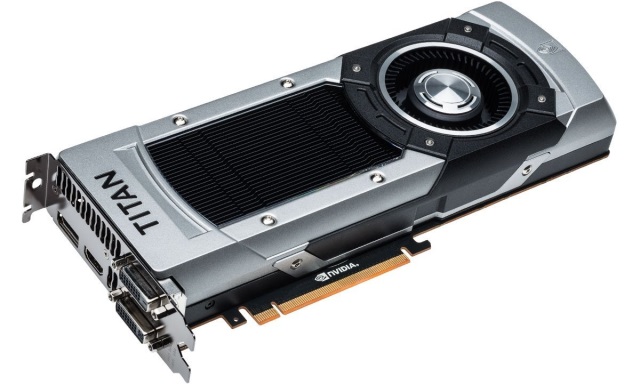Huh? G-sync has been capable on ALL Nvidia gaming graphics cards since the GTX 650.
These NVIDIA graphics cards support G-SYNC monitors. To learn more about GSYNC, check out G-SYNC 101. Latest NVIDIA GPUs GPU Architecture G-SYNC Support FreeSync Compatible GeForce RTX 3090 Ampere Yes Yes GeForce RTX 3080 Ampere Yes Yes GeForce RTX 3070 Ampere Yes Yes GeForce RTX...

blurbusters.com
Is is absolutely compatible with your GTX 970, no question at all. Doesn't matter what model of GTX 970 it is, Maxwell is compatible across the board from GTX 950 up to Titan.
I would recommend that you do a CLEAN install of your graphics drivers, using the DDU, as outlined at the link below, as well as making sure that you have the MOST recent motherboard BIOS version for your motherboard.
From what I'm seeing, there is absolutely ZERO evidence that that, or any given monitor doesn't support G-sync on cards older than a certain generation. G-sync is G-sync, regardless of monitor (As long as it IS a G-sync model) or graphics card (As long as it DOES support G-sync). The only indications I can see of the claim that it doesn't is from what are clearly people who don't have the slightest clue what they are talking about, unless you have some other reputable source that indicates otherwise.
If there are any steps listed here that you have not already done, it would be advisable to do so if for no other reason than to be able to say you've already done it and eliminate that possibility.
First,
Make sure your motherboard has the MOST recent BIOS version installed. If it does not, then update. This solves a high number of issues even in cases where the release that is newer than yours makes no mention of improving graphics card or other hardware compatibility. They do not list every change they have made when they post a new BIOS release.
Second,
Go to the product page for your motherboard on the manufacturer website. Download and install the latest driver versions for the chipset, storage controllers, audio and network adapters. Do not skip installing a newer driver just because you think it is not relevant to the problem you are having. The drivers for one device can often affect ALL other devices and a questionable driver release can cause instability in the OS itself. They don't release new drivers just for fun. If there is a new driver release for a component, there is a good reason for it. The same goes for BIOS updates. When it comes to the chipset drivers, if your motherboard manufacturer lists a chipset driver that is newer than what the chipset developer (Intel or AMD, for our purposes) lists, then use that one. If Intel (Or AMD) shows a chipset driver version that is newer than what is available from the motherboard product page, then use that one. Always use the newest chipset driver that you can get and always use ONLY the chipset drivers available from either the motherboard manufacturer, AMD or Intel.
IF you have other hardware installed or attached to the system that are not a part of the systems covered by the motherboard drivers, then go to the support page for THAT component and check to see if there are newer drivers available for that as well. If there are, install them.
Third,
Make sure your memory is running at the correct advertised speed in the BIOS. This may require that you set the memory to run at the XMP profile settings. Also, make sure you have the memory installed in the correct slots and that they are running in dual channel which you can check by installing CPU-Z and checking the Memory and SPD tabs. For all modern motherboards that are dual channel memory architectures, from the last ten years at least, if you have two sticks installed they should be in the A2 (Called DDR4_1 on some boards) or B2 (Called DDR4_2 on some boards) which are ALWAYS the SECOND and FOURTH slots over from the CPU socket, counting TOWARDS the edge of the motherboard EXCEPT on boards that only have two memory slots total. In that case, if you have two modules it's not rocket science, but if you have only one, then install it in the A1 or DDR4_1 slot.
Fourth,
A clean install of the graphics card drivers. Regardless of whether you "already installed the newest drivers" for your graphics card or not, it is OFTEN a good idea to do a CLEAN install of the graphics card drivers. Just installing over the old drivers OR trying to use what Nvidia and AMD consider a clean install is not good enough and does not usually give the same result as using the Display Driver Uninstaller utility. This has a very high success rate and is always worth a shot.
If you have had both Nvidia and AMD cards installed at any point on that operating system then you will want to run the DDU twice. Once for the old card drivers (ie, Nvidia or AMD) and again for the currently installed graphics card drivers (ie, AMD or Nvidia). So if you had an Nvidia card at some point in the past, run it first for Nvidia and then after that is complete, run it again for AMD if you currently have an AMD card installed.
Graphics card driver CLEAN install guide using the Wagnard tools DDU
And last, but not least, if you have never done a CLEAN install of Windows, or have upgraded from an older version to Windows 10, or have been through several spring or fall major Windows updates, it might be a very good idea to consider doing a clean install of Windows if none of these other solutions has helped. IF you are using a Windows installation from a previous system and you didn't do a clean install of Windows after building the new system, then it's 99.99% likely that you NEED to do a CLEAN install before trying any other solutions.
How to do a CLEAN installation of Windows 10, the RIGHT way



